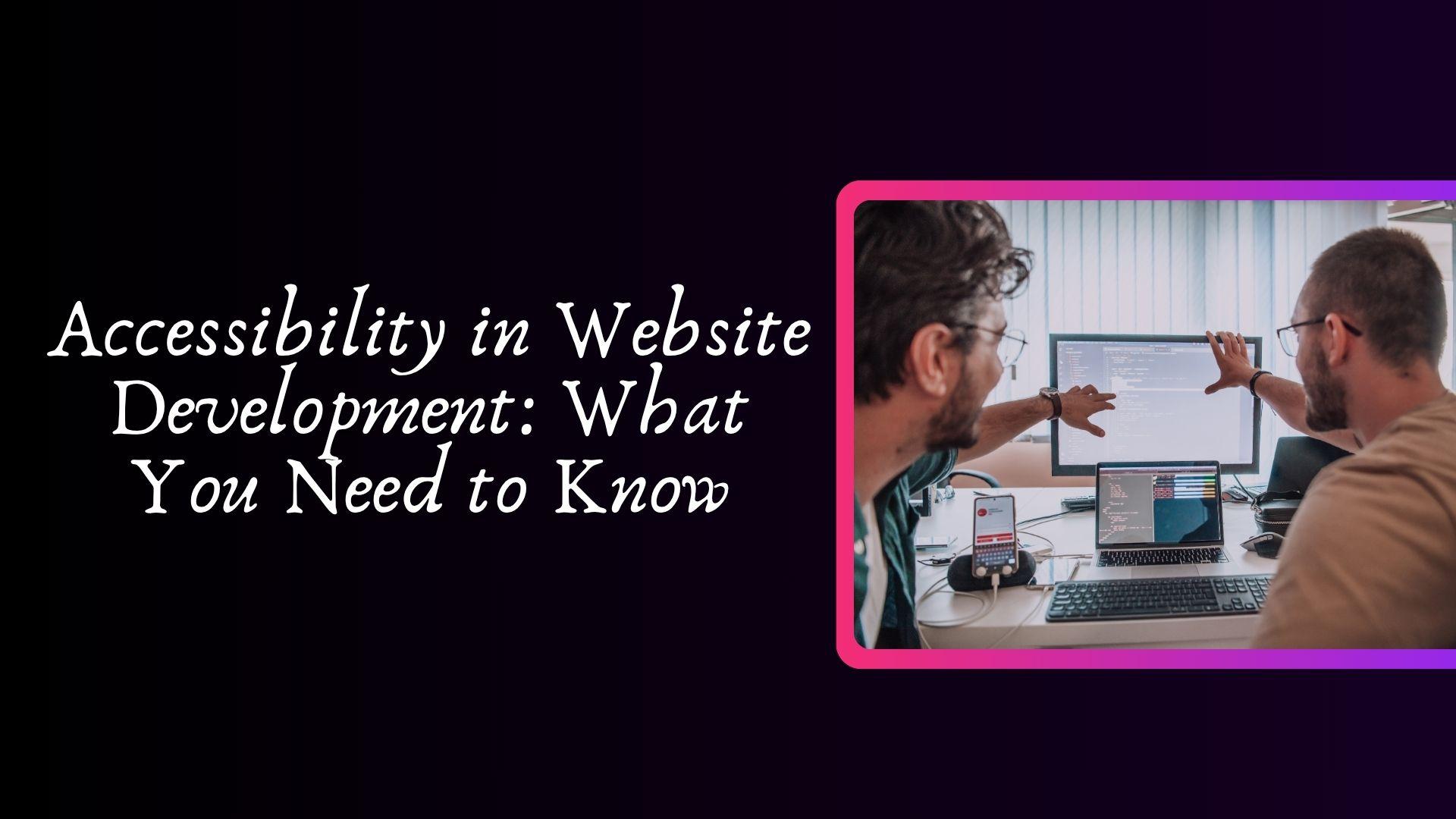Accessibility in Website Development: What You Need to Know

In today's digital-first world, the internet plays a central role in communication, education, business, and social interaction. As website development becomes increasingly essential for everyday tasks, ensuring accessibility is no longer optional—it’s a necessity. Website accessibility refers to designing and developing websites that people with disabilities can use effectively. This article explores why accessibility matters, the key principles of accessible web design, legal implications, tools and techniques for implementation, and how developers can contribute to a more inclusive digital world.
Why Website Accessibility Matters
Website accessibility ensures that individuals with a wide range of disabilities—including visual, auditory, motor, and cognitive impairments—can access and interact with online content. According to the World Health Organization (WHO), over 1 billion people worldwide live with some form of disability. When websites are not designed with accessibility in mind, these individuals are often excluded from accessing critical information and services.
Accessibility is not just a moral obligation; it also makes good business sense. Inclusive websites reach a broader audience, improve SEO, and enhance user experience for everyone, not just people with disabilities. Moreover, accessible websites are often more usable and navigable, benefiting users in low-bandwidth areas, aging populations, and those with temporary impairments (like a broken arm or lost glasses).
Key Principles of Accessible Web Design
The Web Content Accessibility Guidelines (WCAG), developed by the World Wide Web Consortium (W3C), outline the key principles for creating accessible websites. These are summarized as POUR:
-
Perceivable
-
Content must be presented in ways users can perceive. This includes providing alternative text for images, captions for videos, and ensuring sufficient color contrast.
Operable
-
Users must be able to navigate and interact with the website using a variety of input methods, such as keyboard-only navigation or voice commands.
Understandable
-
Content should be readable and predictable. Use clear language, consistent layouts, and instructions that are easy to follow.
Robust
-
Websites should work well across a variety of devices, browsers, and assistive technologies, such as screen readers.
Common Accessibility Barriers in Web Development
Here are some common issues that can make websites inaccessible:
-
Missing alt text for images, which prevents screen readers from describing visual content.
-
Poor color contrast, making it hard for users with vision impairments to distinguish text.
-
Inaccessible forms, such as unlabeled fields or improper focus order.
-
Non-semantic HTML, which confuses screen readers and other assistive tools.
-
Lack of keyboard accessibility, preventing users from navigating without a mouse.
-
Autoplay media, which can disrupt screen readers or overwhelm users with sensory processing disorders.
Legal and Ethical Implications
In many countries, accessibility is legally mandated. For instance:
-
United States: Under the Americans with Disabilities Act (ADA), websites must be accessible to people with disabilities.
-
European Union: The European Accessibility Act requires accessible digital products and services.
-
India: The Rights of Persons with Disabilities Act, 2016, mandates web accessibility for public and private entities offering services to the public.
Non-compliance can lead to legal action, financial penalties, and reputational damage. Ethically, prioritizing accessibility reflects a commitment to inclusion and social responsibility.
Tools and Techniques for Implementing Accessibility
Developers can use several tools and techniques to build accessible websites:
Semantic HTML
Use proper HTML elements (like <header>, <nav>, <main>, <button>, <form>, etc.) to give structure and meaning to the content, aiding screen reader interpretation.
ARIA (Accessible Rich Internet Applications)
ARIA attributes can enhance the accessibility of dynamic content and user interface components, but should be used judiciously and only when native HTML doesn't suffice.
Color Contrast Analyzers
Tools like the WebAIM Contrast Checker can ensure text and background combinations meet minimum contrast ratios.
Screen Reader Testing
Test your site using screen readers like NVDA (Windows), VoiceOver (macOS), or JAWS to identify potential issues.
Keyboard Navigation
Ensure all interactive elements can be accessed via keyboard (e.g., using the Tab key) and maintain logical focus order.
Automated Testing Tools
Tools like Axe, Lighthouse, and WAVE can identify many common accessibility issues and provide guidance for fixing them.
Manual User Testing
Whenever possible, include users with disabilities in your usability testing process to gather real-world insights.
Best Practices for Developers
-
Start with accessibility in mind from the planning phase.
-
Incorporate accessibility into your design and development workflow.
-
Use accessible design patterns and frameworks (e.g., Bootstrap or Material Design with accessibility features).
-
Conduct regular accessibility audits.
-
Stay updated with the latest WCAG standards (currently WCAG 2.2, with WCAG 3.0 in development).
-
Educate your team on accessibility principles and tools.
The Future of Accessibility in Web Development
As AI, virtual reality (VR), and other emerging technologies become more mainstream, ensuring accessibility will become more complex—but also more vital. Innovations like voice-based navigation, AI-driven screen readers, and accessible VR interfaces are promising areas of development.
Inclusive design is shifting from a compliance checkbox to a core principle of UX/UI design. Companies that champion accessibility are increasingly seen as leaders in digital innovation and social impact.
Conclusion
Website accessibility is a cornerstone of inclusive web development. By following best practices, utilizing the right tools, and staying informed on evolving standards, developers can ensure that their websites serve everyone, regardless of ability. Accessibility is not just about avoiding lawsuits—it’s about human rights, equal access, and creating a digital space where all users feel welcome and empowered.
- Art
- Causes
- Best Offers
- Crafts
- Dance
- Drinks
- Film
- Fitness
- Food
- Jeux
- Festival
- Gardening
- Health
- Domicile
- Literature
- Music
- Networking
- Autre
- Party
- Religion
- Shopping
- Sports
- Theater
- Wellness



